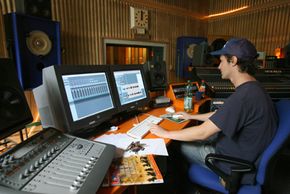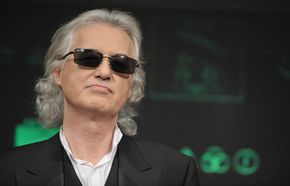If you're remastering a vinyl album for playback on CD, then the first step is to locate the original analog version of the final mix and digitize each track into a DAW like Pro Tools. If you're remastering an existing CD, then you'll need a copy of the original digital version of the final mix.
The next step is to assemble the tracks in the desired order. Track order influences the overall flow of the CD, like the emotional highs and lows of a good mix tape. Mastering engineers worry about track order first, because it will affect how each song is sonically balanced with those that come before and after it.
Now the mastering engineer uses a palette of software tools to "sweeten" the sound of each song. It's important to understand that mastering engineers tweak and adjust the sound of the entire stereo mix of a song, not the settings of each individual instrumental or vocal track. Those individual track settings are already locked in by the mixing engineer.
The most common tools of the mastering engineer are a compressor, a limiter and an equalizer. Both compressors and limiters are used to control the loudness of the song. This is not the same as the volume of the song, which is ultimately controlled by the listener. To understand how compressors and limiters work, you first need to understand the difference between loudness and dynamics.
Dynamics refer to the overall dynamic range of a song, which is measured by calculating the difference between the loudest and quietest parts of a song. In the recording studio, loudness is measured in negative decibels (-dB) with zero representing the loudest recordable sound. Without compression, a song might have a loud section that registers at -6dB and a soft part that measures -48dB for a total dynamic range of 42dB.
If a mastering engineer wants to make the whole song louder, he might raise the gain by 6dB. But if he did that with our example, then the loudest part of the song (-6dB) would shoot up to zero, which is too loud to play back clearly on most stereo systems. Instead, he would use a compressor to shrink the dynamic range of the song, so that the loudest parts aren't so loud and quiet parts aren't so quiet. He can now safely raise the overall gain of the song without pushing the loudest parts into the red.
A limiter works in a similar way, putting a cap on the loudest parts of a song. If a sound exceeds that limit, it will be automatically reduced by a predetermined ratio, say 2:1. So for every two decibels over the limit, the sound will be reduced by one decibel. A good mastering engineer knows how to use compressors and limiters to add sufficient loudness and emotional impact to a track without over-flattening or collapsing the dynamic range.
Next, the engineer uses the equalizer tool to achieve the perfect tonal balance of the song. A software equalizer looks just like the analog equalizer on your home stereo with faders for each frequency of the audible spectrum. Throughout the song, the mastering engineer will adjust the faders to fatten bass sounds, highlight treble details and keep everything balanced.
For DVD remastering, film and video editors use special restoration software like MTI's Digital Restoration System (DRS) to painstakingly remove dust and debris from damaged film stock and restore colors to their original splendor. Special audio editors then use systems like ProTools to remove blips and beeps, boost dialogue levels, clarify audio effects and add Dolby 5.1 surround sound [source: Frucci]. Today, many DVDs are being specifically remastered for release on high-definition Blu-Ray DVDs.
Despite the transformative power of digital editing, some people are not fans of remastering CDs. Read on to find out why.



